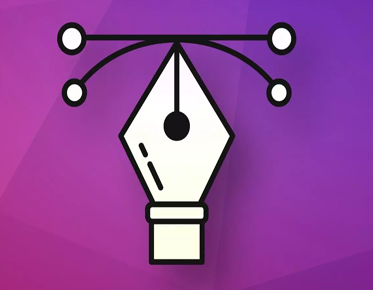Embroidery on the Edge: Mastering Digitizing for Difficult Fabrics with Troubleshooting Techniques
Embroidery digitizing is an art that transforms digital designs into intricate, stitched patterns on various fabrics. While the process may seem seamless on traditional materials, difficulties arise when dealing with challenging fabrics that test the limits of embroidery machines and digitization techniques. In this blog, we'll explore the nuances of embroidery digitizing for difficult fabrics, unraveling troubleshooting techniques to overcome common issues, and achieving impeccable results on materials that push the boundaries of the craft.
Understanding Difficult Fabrics
Stretchy
Fabrics:
Materials like spandex, Lycra, or jersey
present challenges due to their inherent stretchiness. Traditional embroidery
on such fabrics can result in puckering or distortion, requiring specific
digitizing techniques to accommodate the stretch.
Delicate and Sheer Fabrics:
Delicate and sheer fabrics, such as organza or
chiffon, demand a delicate touch to avoid tearing or distortion. These fabrics
can be transparent, amplifying the impact of any imperfections in the
embroidery.
High-Density Fabrics:
Fabrics with a high thread count or density,
like canvas or denim, pose challenges due to the increased resistance of the
needle. Achieving clean and precise embroidery on
such fabrics requires adjustments in digitizing to prevent thread breakage or
distortion.
Napped Fabrics:
Fabrics with a nap or texture, such as velvet or terry cloth, can make it challenging to achieve smooth, even stitching. The texture of these fabrics requires careful consideration in digitizing to maintain the integrity of the design.
Troubleshooting Techniques for Difficult Fabrics
1.
Digitize for Stretch:
When working with stretchy fabrics, it's
crucial to digitize with the fabric's elasticity in mind. Use underlay stitches
strategically to stabilize the fabric and reduce stretching during embroidery.
Incorporate more pull compensation to prevent distortion, allowing the design
to stretch with the fabric.
2. Use Lightweight Designs for Sheer Fabrics:
Sheer fabrics require a delicate touch. Opt
for lightweight and open designs that reduce the number of stitches. Consider
incorporating small, intricate details rather than dense fills to maintain the
fabric's transparency and prevent puckering.
3. Adjust Density for High-Thread-Count Fabrics:
High-density fabrics demand adjustments in
digitizing to prevent needle breakage and achieve clean embroidery. Reduce the
stitch density for intricate designs and consider using thinner thread to
accommodate the fabric's density without compromising the design's integrity.
4. Adapt for Napped Fabrics:
Napped fabrics, with their unique texture, require adaptability in digitizing. Adjust the digitized design to account for the texture by using slightly longer stitches. Conduct test runs to ensure that the embroidery sits smoothly on the surface without getting lost in the fabric's nap.
Tips for Troubleshooting and Achieving High-Quality Results
1.
Conduct Test Runs:
Before committing to the final embroidery,
conduct test runs on scraps of the actual fabric. This allows you to identify
potential issues, refine your digitizing settings, and make adjustments as
needed to achieve optimal results.
2. Select the Right Needle:
The needle used in embroidery plays a
significant role in the final outcome. Choose a needle appropriate for the
fabric type and weight. For delicate fabrics, opt for finer needles, while
heavyweight fabrics may require stronger needles to penetrate dense materials.
3. Stabilize with Backing:
Proper backing is essential for stabilizing
the fabric during embroidery. Choose a backing that complements the fabric
type—tear-away or cut-away backings for stability, especially on stretchy
fabrics, and water-soluble backings for delicate or sheer fabrics.
4. Consider Hoop Options:
The type of hoop used can impact the tension
and stability of the fabric during embroidery. Experiment with different hoop
options, such as magnetic or adhesive hoops, to find the one that works best
for the specific fabric you are embroidering.
5. Optimize Machine Settings:
Fine-tune your embroidery machine settings for
each challenging fabric. Adjust the tension, speed, and presser foot pressure
to accommodate the characteristics of the material. Refer to your machine's
manual for guidance on optimizing settings for different fabric types.
6. Use Embroidery Software Features:
Leverage the features of your embroidery
software to address challenges posed by difficult fabrics. Some software tools
allow you to adjust stitch angles, pull compensation, and stitch density,
providing greater control over the digitized design.
7. Employ Floating Techniques:
For fabrics that may be too delicate or prone
to distortion, consider using floating techniques. This involves manually
guiding the fabric during embroidery, allowing for greater control and
precision. However, it requires close attention to prevent shifting.
8. Practice Proper Thread Tension:
Maintaining proper thread tension is crucial for achieving clean and even embroidery. Adjust the tension settings on your machine to suit the specific requirements of the fabric. Conduct regular checks during embroidery to ensure consistent tension.
Overcoming Challenges on Specific Fabrics
1.
Stretchy Fabrics (Spandex/Lycra)
Challenge:
Stretchy fabrics like spandex or Lycra tend to
pucker or distort during embroidery, resulting in an uneven finish.
Solution:
●
Digitize with stretch in mind,
incorporating additional underlay stitches for stabilization.
●
Use a ballpoint needle designed
for stretch fabrics to prevent damage.
● Consider using a water-soluble topping to further stabilize the fabric surface.
2. Sheer
Fabrics (Organza/Chiffon)
Challenge:
Sheer fabrics are delicate, and dense
embroidery can lead to tearing or distortion.
Solution:
●
Opt for lightweight, open designs
with fewer stitches to maintain transparency.
●
Use a finer needle to minimize the
impact on delicate fabrics.
●
Employ a cut-away backing for
added stability without affecting the fabric's drape.
3.
High-Density Fabrics (Denim/Canvas)
Challenge:
High-density fabrics can cause needle breakage
and distortion if the digitizing is not adjusted accordingly.
Solution:
●
Reduce stitch density for
intricate designs to prevent needle stress.
●
Experiment with thinner thread to
navigate the fabric's density.
●
Utilize a sturdy needle designed
for heavyweight fabrics.
4.
Napped Fabrics (Velvet/Terry Cloth)
Challenge:
Napped fabrics present a unique texture that
can affect the appearance of the embroidery.
Solution:
●
Adjust the digitized design with
longer stitches to accommodate the fabric's texture.
● Test-run the embroidery on a sample to ensure that the stitches sit smoothly on the surface.
Conclusion
Embroidery
digitizing for difficult fabrics is a craft that demands precision,
adaptability, and a keen understanding of the unique characteristics of each
material. By employing troubleshooting techniques tailored to specific
challenges, embroiderers can overcome the hurdles posed by stretchy, sheer,
high-density, and napped fabrics. Whether through adjustments in digitizing
settings, careful selection of needles, or strategic use of stabilizers,
mastering the art of embroidery on difficult fabrics opens up new possibilities
for creating stunning, intricate designs that stand out on even the most
challenging materials. With a blend of technical expertise and creative
finesse, embroidery on the edge becomes a journey of exploration and triumph
over textile boundaries. Happy stitching!


